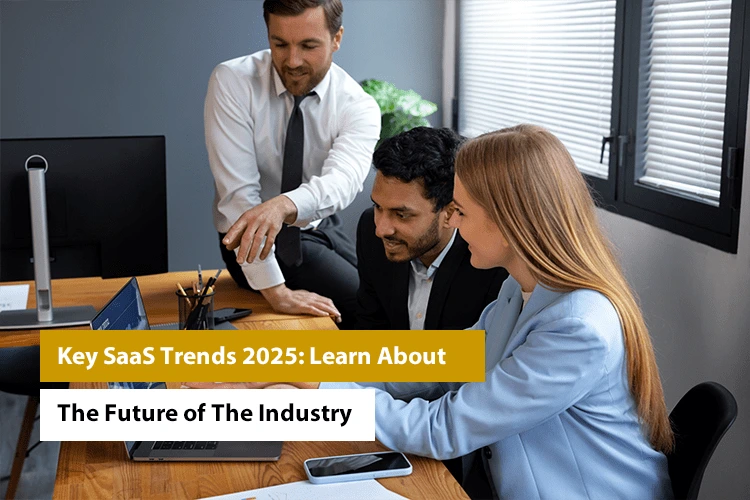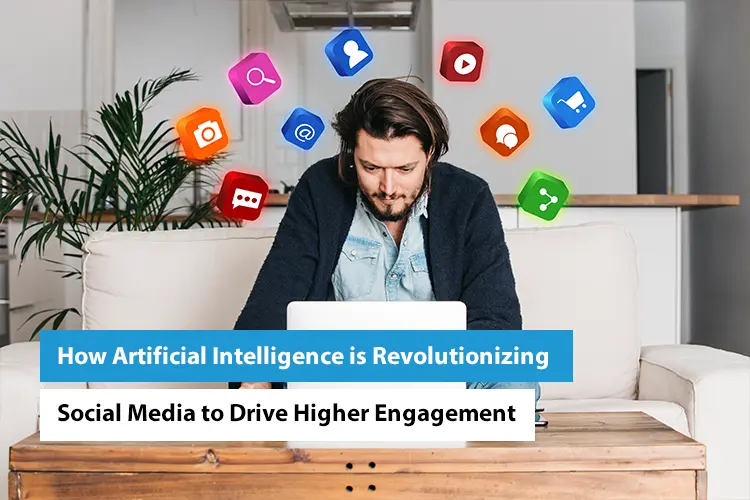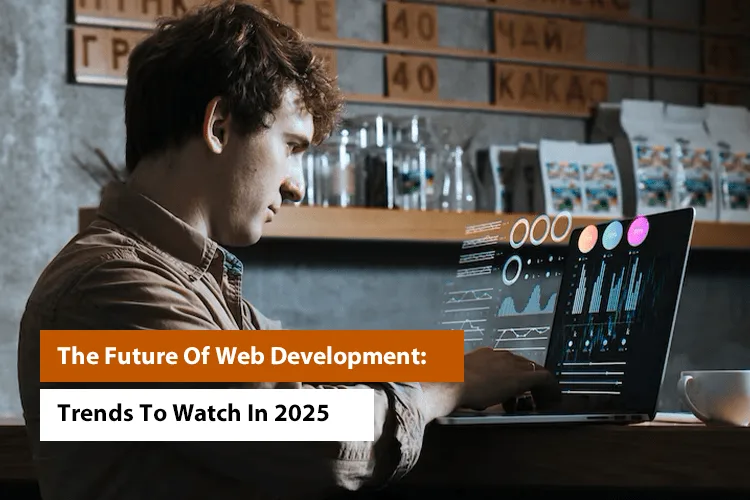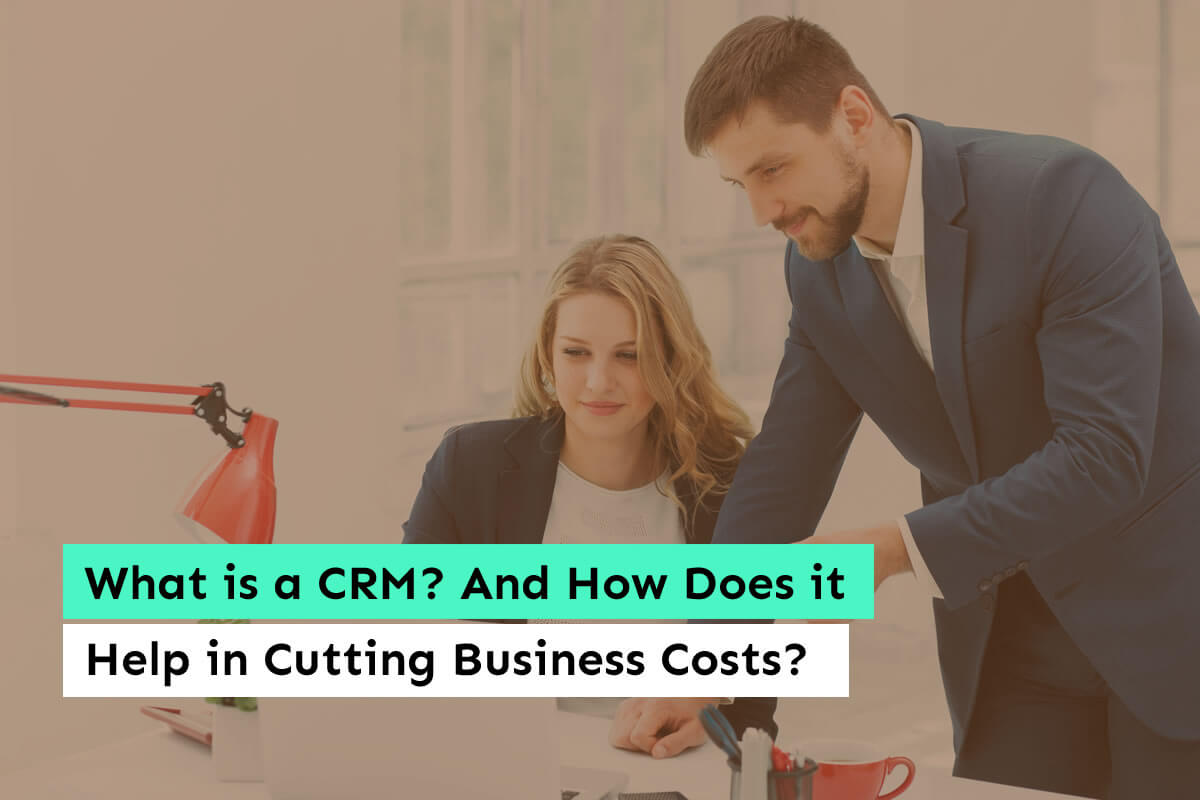Key SaaS Trends 2025: Learn About The Future of The Industry

The global SaaS market is likely to reach over $250 billion by 2025, whereas it has been recorded as $195 billion in 2023. Why? Businesses everywhere are embracing more SaaS solutions than ever. These applications are transforming work processes, increasing productivity, and promoting innovation.
No more the technological revolution; it’s the way of doing business in this new world. Each company uses SaaS tools from a small-sized organization to medium-sized ones and even large-scale corporations to smoothen operations, improve customer experiences, and remain competitive.
In this blog, we’re going to experience the top SaaS trends in 2025 that should rule. The trend of AI-driven tools and low-code platforms has contributed to innovative changes, which we discuss to take the industry ahead. Furthermore, we shall also give some tips on how businesses can capitalize on these new changes.
Current SaaS Landscape: A Quick Recap of 2024

Let’s take a closer look at the now situation. We move forward to set up a quick peek through the horizon concerning what is currently taking place in the SaaS industry. 2024 was a transformative year that made great strides and had widespread adoption:
- The SaaS market grew further to grow over 20% as multiple organizations started embracing these cloud-based solutions.
- Adoption rates skyrocketed to 80% as the percentage of companies using at least one SaaS application daily had reached an all-time high: 70% by 2022.
- The most popular use cases were CRM, HRM, and collaboration on projects, as companies strive to make their operations more centralized.
- Seamless integration continued to be the “pain point” for the business, and data security became a challenge for the industry while remaining to be one of the trending ones.
Despite this, these challenges were overcome by SaaS, which has paved the way for even more growth and change in 2025.
Key SaaS Trends to Watch in 2025

As we progress into the future, several prominent trends are expected to shape the SaaS industry in the years ahead. Well, let’s take a look at some of these innovations and understand how they would affect businesses-even the end-users.
AI and Machine Learning Integration in SaaS
Artificial intelligence and machine learning are transforming SaaS. These technologies enable software to learn and improve through interactive experiences with end-users. By 2025, nearly every SaaS will use AI to develop smarter, faster, and more efficient services.
Imagine having a CRM that can predict when to convert a lead or an HR tool that automates candidate screening. You can envision how tremendous this is of what AI-powered SaaS will do.
Key Benefits
- Automation workflow reduces manual effort and increases productivity.
- Predictive analytics facilitates business data-driven decision-making.
- The service of support will be improved significantly by AI-driven chatbots and support.
- Better accuracy in tasks like forecasting and reporting.
- Software self-learning hence always up to date with needs.
Hyper-Personalization and Customer-Centric Solutions
Today’s customer wants to be addressed exactly according to his needs. Hyper-personalization is a way to utilize data for a hyper-crafted user experience. This could mean that, in SaaS, dashboards could be crafted to individual customer needs, customized workflows, or predictions of related product offerings.
Hyper-personalization is the synonym of a more evolved version of personalization. It uses real-time user behavior and preferences. This is a trend on the rise for 2025 because today customers need improved customer satisfaction and retention.
Key Benefits
- Benefit from a user-friendly experience through personalization of the interfaces and functionalities.
- Increase the engagement of customers with relevant content and tools.
- Make the customer’s loyalty to the product stronger as the user has a more personalized experience.
- Make the product adoption rate better as people found the software intuitive and worthy.
- Reinforce it with the usability insights taken from the data
Increased Emphasis on Cybersecurity and Data Privacy
The more SaaS is adopted, the greater the cyber risk. Business now deals with large volumes of sensitive data, therefore opting for cyberattacks. Following on, by 2025, end-to-end encryption, multi-factor authentication, and zero-trust security models will be the new normal on the SaaS platforms.
Data privacy regulations are getting increasingly high around the world. SaaS providers are thereafter obligated to adhere to the law.
Key Benefits
- Better data security reduces the chances of a breach.
- Improved customer trust as effective security measures are provided.
- Global norms followed in their system ensure legal security
- System reliability is improved with secure infrastructures
- Advanced tools to detect threats proactively.
Vertical SaaS Solutions
As opposed to those traditional SaaS offerings, Vertical SaaS focuses on particular industries, such as health, finance, or retail. The reason why applications of specific industries are more effective than general ones is their tailored features.
For example, some vertical SaaS applications include patient scheduling and the integration of electronic health records. This trend also puts a lot of pressure on businesses since most businesses look out for unique problem-solving tools.
Key Benefits
- The industry-specific need is serviced through tailor-made features.
- Higher efficiencies with workflows that have been specialized for specific sectors.
- It is faster in implementation because the organizations don’t need to customize much.
- Better compliance with industry regulations.
- Solutions that directly affect the core operations of the business will improve ROI.
Rise of Low-Code and No-Code SaaS Platforms
Not all companies have in-house developers’ teams. That is where low-code and no-code platforms stand. These platforms are those that help nontechnical users build applications through simple drag-and-drop interfaces.
These platforms, by 2025, will be of immense importance for businesses wishing to innovate rapidly with minimal reliance on IT teams. It ranges from automating workflows to building customer portals and much more.
Key Benefits
- Enables non-developers to build and tailor applications
- Greatly reduces development time
- Stops waiting for IT teams to free up for challenging tasks
- Cost-effective innovation as businesses save on development costs
- Increases agility in response to change in the business needs.
SaaS Interoperability and Integrations
By 2025, many organizations will consider several SaaS tools as part of the norm for performing a variety of functions. However, such tools have to be interoperable, failing which they do not work well together. In 2025, business needs that are seeking solutions to integrate easily with a company’s existing technology stack will be critical.
From marketing automation integration with CRM systems to accounting software synchronized with ERPs, the goal is to have a unified ecosystem.
Key Benefits
- Work processes become streamlined with integrated tools.
- Data gets integrated across applications into one source for better decision-making
- Fewer silos between departments in operations.
- Increased efficiency through the elimination of redundant tasks
- Enhanced usability through flawless integration processes.
Edge Computing and Decentralized SaaS Models
Edge computing brings data processing closer to the location of real users and therefore reduces latency and allows for better decision-making in real-time. For SaaS, this means higher performance and capability in some respects, where more IoT or gaming support is probably needed.
Decentralized models of SaaS also distribute workloads that help them build and run in a resilient and efficient manner. This trend will revolutionize how SaaS platforms are built and operated.
Key Benefits
- Processes data much faster for real-time applications.
- Improved latency for better user experience.
- Resilience is enhanced by the distributed architecture.
- Cost savings through optimizing consumption.
- Scalability improves across business functions.
Subscription Model Evolution and Pricing Innovations
The traditional fixed subscription model is transforming. By 2025, usage-based pricing will increase sharply. Customers pay only for how much they use the software. A combination of subscriptions and usage fees hybrid models will also trend.
These innovations allow businesses to better align the costs of software with real needs, hence offering greater flexibility and more value.
Key Benefits
- Cost efficiency is achieved by paying only for what is being used.
- More flexible in terms of scaling up or down.
- Transparent pricing improves customer satisfaction.
- Increased retention, since the pricing is consistent with the consumer value.
- Better predictability of revenue for SaaS companies.
Future Challenges in SaaS (2025)

As the SaaS industry continues to evolve, several challenges will arise, and thus, be addressed by both the providers and users of the service. Here are the key challenges and how to address them:
Managing Data Privacy Amidst Personalization
Hyper-personalization is heavily reliant on the data of the users. Therefore, maintaining confidentiality with personal services is going to be very tough. Strong protection measures for data are to be taken by providers for compliance with global regulations and faith from the customers.
Balancing Cybersecurity Costs
Advanced security measurements require a huge amount of money. Small businesses can’t afford those security devices. Cyber attacks and breaches may occur at any time if not properly managed business.
Staying Competitive in a Crowded Market
More and more players in the SaaS market mean that it would be difficult to stand out, and the sheer number of providers would always innovate and offer some unique features to keep them in the game, serving a relevant purpose for customers.
How SaaS Providers Can Prepare

- Invest in Security: Make investments in improved security to safeguard data and instill customer trust.
- Focus on Differentiation: Develop unique, value-driven features that solve specific pain points of your target audience.
- Stay Compliant: Keep reviewing and updating the compliance strategy constantly in order not to be way behind changing regulations and avoid penalties for being so. Partnering with the best software development company can be a game changer in this situation.
Opportunities for Businesses and End Users

Despite the challenges, the SaaS landscape in 2025 presents numerous opportunities for businesses and end-users alike.
For Businesses
- Enhanced Efficiency: Use AI-driven SaaS for better decision-making.
- Cost Savings: Leverage low-code platforms to reduce development costs.
- Competitive Advantage: Adopt personalized SaaS to stay ahead.
For End Users
- Improved Experiences: Enjoy personalized features tailored to your needs.
- Better Security: Benefit from enhanced data protection measures.
- Seamless Integration: Experience smoother workflows with interoperable tools.
Tips for Business Leaders
- Choose the Right SaaS Partner: Look for providers with proven expertise and strong security measures.
- Invest in Training: Your teams need to be able to make proper and total utilization of these SaaS tools.
- Stay Informed: Maintain awareness of industry trends in the case of making informed decisions.
Embracing the Future of SaaS

SaaS will experience some amazing growth and change in 2025 and beyond. The trends of hyper-personalized and industry-specific solutions, in combination with the next-generation cutting-edge technologies like AI and edge computing, will redefine how businesses will operate and deliver value.
Under such conditions, companies need to have a customer-centric orientation when adopting any new technology and must be responsive and quick to this adoption if they are to thrive. Here at Imenso Software, we are working through an exciting future that is guiding businesses into embracing and taking hold of this new future. Our industry expertise joined with innovative SaaS solutions, commitment to security, and compliance make us your partner for the future.
Ready to future-proof your business and scale on the revolutionary power of SaaS? Contact Imenso Software today, and let’s build the solutions that will shape the industry in 2025 and beyond.
FAQs
What is SaaS and why it matters in the year 2025?
SaaS delivers software through subscription-based, cloud-based delivery. It’s crucial for businesses in 2025 because it brings aspects of scalability and cost-effectiveness as well as the introduction of AI and automation, thus assisting in improving work and customer experience.
What is the future growth of SaaS?
The future growth of SaaS will be above the roof since businesses seek cloud-based solutions which they increasingly demand for efficiency and cost savings in addition to advanced technologies like AI, machine learning, and automation.
What is the prediction for the SaaS market?
The SaaS market will probably continue growing at a CAGR of 18-20% until it touches $300 billion by 2025, led by mass adoption cutting across industries and the rapidly growing need for digital transformation.
What is good growth for a SaaS company?
Good growth for a SaaS company includes above-average annual revenue growth of 20% to 30%. The rates of customer acquisition and retention must also be good. Expanding market presence is also characteristic. Profitability and sustainable scaling are good indications.
How can businesses ensure their SaaS solutions are future-proof?
Businesses can better future-proof their SaaS solutions if focus areas are laid in scalability, security, and flexibility aspects, and more emerging technologies like AI are adopted. The companies should select only those vendors who guarantee periodic updates and ongoing support.
How can businesses prepare for the upcoming SaaS trends in 2025?
Businesses need to be ahead of the curve concerning the latest trends; invest in flexible solutions, much in the aspect of cybersecurity, and see to it that teams are well prepared in new SaaS tools.
What is the importance of data privacy in SaaS?
Data privacy in SaaS becomes a necessity that one cannot afford to leave unattended simply by being compliant with regulations, for example, GDPR, to strengthen customer trust and ensure the safe handling of sensitive information. Secure data handling along with transparency is most important to keep a business’s reputation and legal compliance intact.
We’re honored to mention that our efforts have been recognized by renowned B2B review and research platforms such as GoodFirms, Clutch, MirrorView, and many more.
Want more information about our services?
Similar Posts

How Artificial Intelligence is Revolutionizing Social Media to Drive Higher Engagement
Have you ever wondered how social media platforms seem to know exactly what content you want to see, even before you do? Or how they manage to keep you endlessly scrolling through your feed, mesmerized by a stream of captivating posts and videos? The answer lies in the powerful integration of Artificial Intelligence (AI) into […]...

The Future Of Web Development: Trends To Watch In 2025
The internet is not simply a place to discover information; it has become a world of creativity, enterprise, and connections. Every year, we see massive changes in how web development. We also see big changes in how apps are created and used. For businesses, these trends are more than just changes. They are chances to […]...

What is a CRM? And How Does it Help in Cutting Business Costs?
Do you how much money is lost due to poor customer service every year? $1.6 Trillion! Poor customer service may result because of various reasons, but the most common is that businesses fail to understand their customer’s needs and expectations. Are there always some unhappy customers present? True, but they are just a minute percentage […]...









